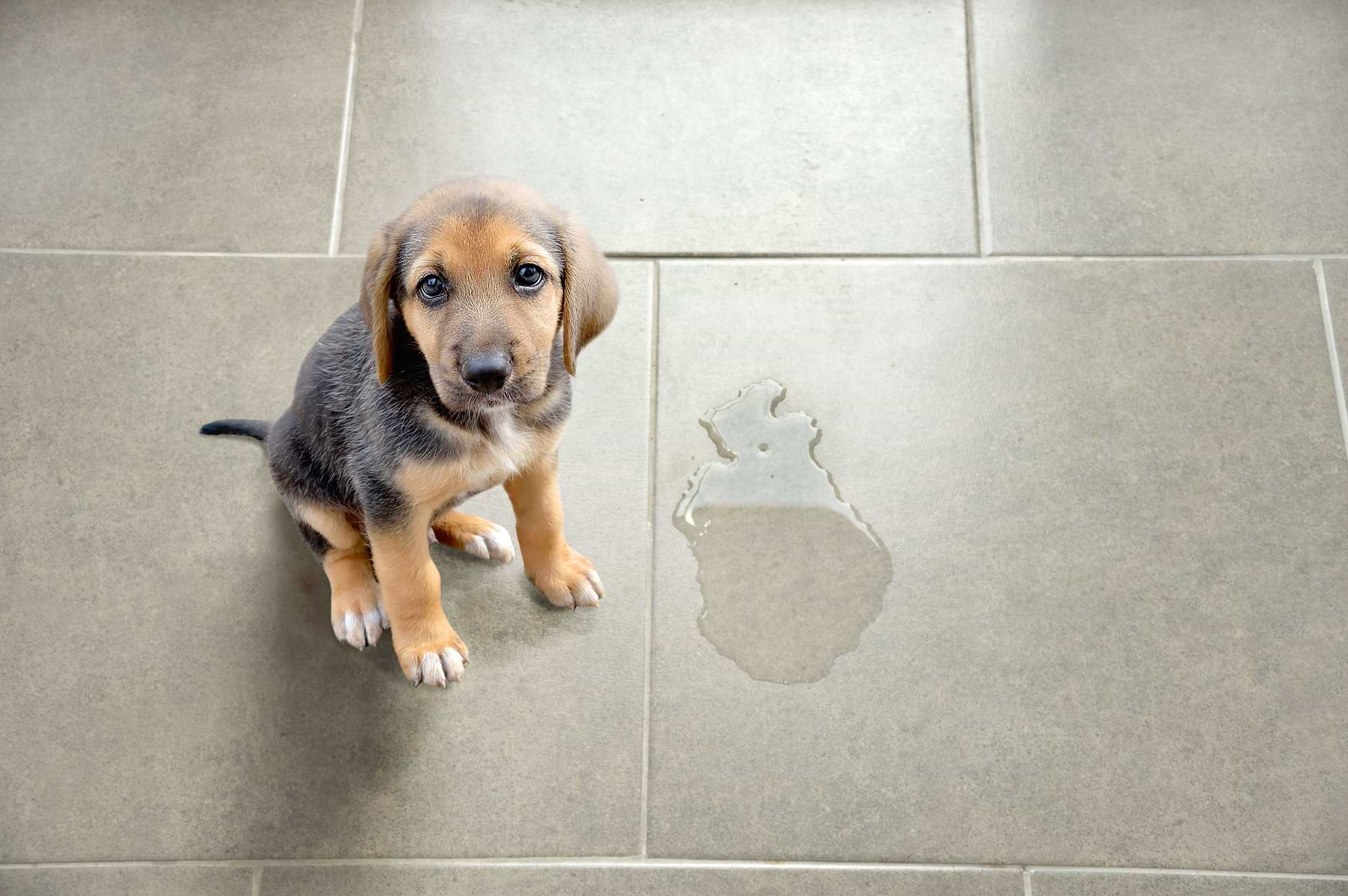Whether your dog has always marked their territory or if this is a new behavior, it’s understandable that you want to stop it as soon as possible. Here’s our guide on how to make marking a thing of the past.
Why Do Dogs Mark Territories?
Dogs feel the need to mark their territory for several reasons, but they generally revolve around one central idea. If your dog feels threatened or insecure with their territory, they are much more likely to begin marking. Otherwise, this might be an instinct that has not yet been trained out of them. Here are a few of the most common explanations for a dog who suddenly starts marking.
They Have Just Been Brought to a New Home
Moving is a stressful process for humans, so just imagine how moving feels for dogs. Their surroundings are now completely different, and they do not know why. Not only that, but this new space does not smell like them. This is why it is important to bring elements of your dog’s old space to your new home and try to add their smell ahead of time. Otherwise, your pet might try to expedite the process by peeing on everything in sight.
A New Dog or New Pet Has Been Introduced Into the Household
When there is a sudden change to the makeup of the household, your dog can easily feel like their place on the proverbial totem pole has been threatened. They might begin peeing on surfaces to convey that they are the top dog and not to be messed with.
This Could Be an Expression of Your Dog’s Anxiety
If your dog is especially anxious or stressed out, it is possible that this behavior is a result of submissive urination. In this case, identify the source of the anxiety, and possibly seek the help of an animal behaviorist.
Do Male Dogs Mark Territory More Than Female Dogs?
Marking of territory is often considered to be a behavior that is solely associated with male dogs. The reality is actually a bit more nuanced than that. It is true that, on average, male dogs will direct their urine marking at specific items more often than females. Since this is the main behavior associated with scent marking, this means that males are more likely to scent mark their territory than females.
That should explain where the stereotype that only male dogs mark comes from, but there is more to the story. Female dogs are also capable of marking their territory in this way, even though it is not quite as common. Female dogs are also more likely to scent mark their territory outside rather than in the home. While stopping to pee every few minutes on a walk might not be ideal, this is still far preferable to coming home and seeing their latest bout of house soiling.
However, both male and female dogs are much more likely to scent mark if they have not been spayed or neutered. We will discuss that more later in this article.
1. Make Sure That There Are No Medical Causes for This Behavior
First and foremost, you are going to need to make sure that your dog is truly displaying signs of marking behavior, rather than having some kind of medical condition. After all, there is an assortment of ailments that can result in your dog emitting small amounts of urine all over the house.
If there is a medical issue present, it is crucial to get it sorted out as soon as possible with your pet’s veterinarian. A common cause of frequent urination is a urinary tract infection, which should be diagnosed and treated immediately.
2. Spay or Neuter Your Dog
As we touched on earlier, spaying or neutering your dog has a significant impact on whether or not they will engage in urine-marking behavior. Intact males experience much stronger and more severe instincts, especially when it comes to territorial marking. In order to combat this, you can neuter your pet early and easily.
The procedure to spay or neuter your dog is an incredibly common one that can actively reduce certain risk factors later in life. For instance, a spayed female is at a lesser risk for mammary tumors. Meanwhile, neutered males are less likely to suffer from various types of cancer.
If you wait until adulthood to have this procedure done on your pet, it is likely that many habits––including marking––will have already been formed. It is much more difficult to curb urine marking in dogs that remained intact until later in their lives. Be sure to speak with your dog’s vet to determine when is the best time to get your pet spayed or neutered.
3. Give Them a Properly Sized Crate
It is no secret that crates provide a convenient option for pet parents who need a portable and comfortable option for their pet, but they have many more benefits than just that. When your dog is inside of their crate, they will find that their natural denning instincts are set off. These instincts make your dog feel much more at home, but they have another huge advantage. Your dog will not want to soil their crate, making it a perfect pee-free zone.
In order to make the most of this opportunity, it is crucial to get your dog a crate that is the right size for them. If the crate is too large, then your dog might not identify it as a place where peeing is off the table. Meanwhile, if the crate is too small, the space will be cramped and uncomfortable, and your dog will likely not want to spend time there.
A crate should be large enough for your dog to comfortably stand up and turn around, but not much larger. Diggs has crates of various sizes that will wonderfully accommodate both your dog and your environment. Not only that, but they are easily storable and moveable. Plus, they come with a puppy divider so the space can work for your dog as they grow.
4. Thoroughly Clean All Markings, Then Repeat
This is one of the less glamorous parts of pet parenthood, to be sure. Unfortunately, almost any pet will have accidents inside the house from time to time. It just comes with the territory (see what we did there?). It will come as no shock that these messes have to be cleaned up as soon as you notice them. However, it is important that you put some thought into how exactly you go about cleaning them up.
Even if a mess might appear gone to the naked eye, it can still do damage. Firstly, we of course want all of the urine completely removed. That being said, even if we perceive the issue as being completely gone, often our dogs can still smell it for up to several weeks after the fact. If your dog can still smell their pee, they will be attracted to that spot, and want to mark it repeatedly.
You can avoid this fate by employing the use of an enzymatic cleaner. These are much more effective when it comes to completely ridding a space of any mess. Be sure to avoid any cleaners that contain ammonia, as ammonia is also found in urine. As a result, your dog could smell the cleaner and still perceive the spot as one to be marked anyway.
Then, you should continue cleaning the spot for the next several days into weeks. This is a necessary step to make sure that the smell is completely gone for your dog, and that the issue will not reoccur.
5. Potty Train (or Begin Re-House Training) Your Dog
If your dog has not yet been potty trained, then it is understandable that they would have some confusion over where they should use the bathroom. This is different behavior than when dogs mark, but they both require the use of the house training process. Even if your dog has already been house-trained, this can be a very helpful exercise if they are engaging in marking behaviors.
Take your dog outside right after waking up, after any meals, and approximately every hour or so. This process might seem tedious at the moment, but you will be grateful when the result is a clean home.
This also applies in the brief moments before your dog starts to go inside the house. If you are keeping a close eye on them, you might notice that they begin sniffing at or inspecting surfaces in the house. When you notice this behavior, it is time to quickly escort them outside for a bathroom break.
Whether you are potty training your dog, or if you brought them outside before they had the chance to mark, our next suggestion is crucial.
6. Praise Positive Peeing
Alliteration aside, this tip is key. Dogs respond incredibly well to positive reinforcement, so you should find every opportunity to praise your dog for good behavior. Anytime that they pee outside of the house, that is your chance to really lay on the praise. You can verbally praise them, give your dog treats, pet them, or do whatever else they really appreciate.
Mark Our Words
Actually, if you are a dog, please don’t mark our words. If you’re human, you can rest assured that there are ways to curb your dog’s instinct to mark their territory. With some time, understanding, and patience, behavior modification is possible. Your floors will thank you.
Sources:
Spaying and Neutering Your Puppy or Adult Dog: Questions and Answers | American Kennel Club

The Diggs Team
We believe our dogs deserve safer, better designed pet products.
You might also like
Crate training tips, stories and inspiration
View all blogsIn Your Diggs
Share your photos with #DiggsPet and tag us @DiggsPet on IG and TikTok.



